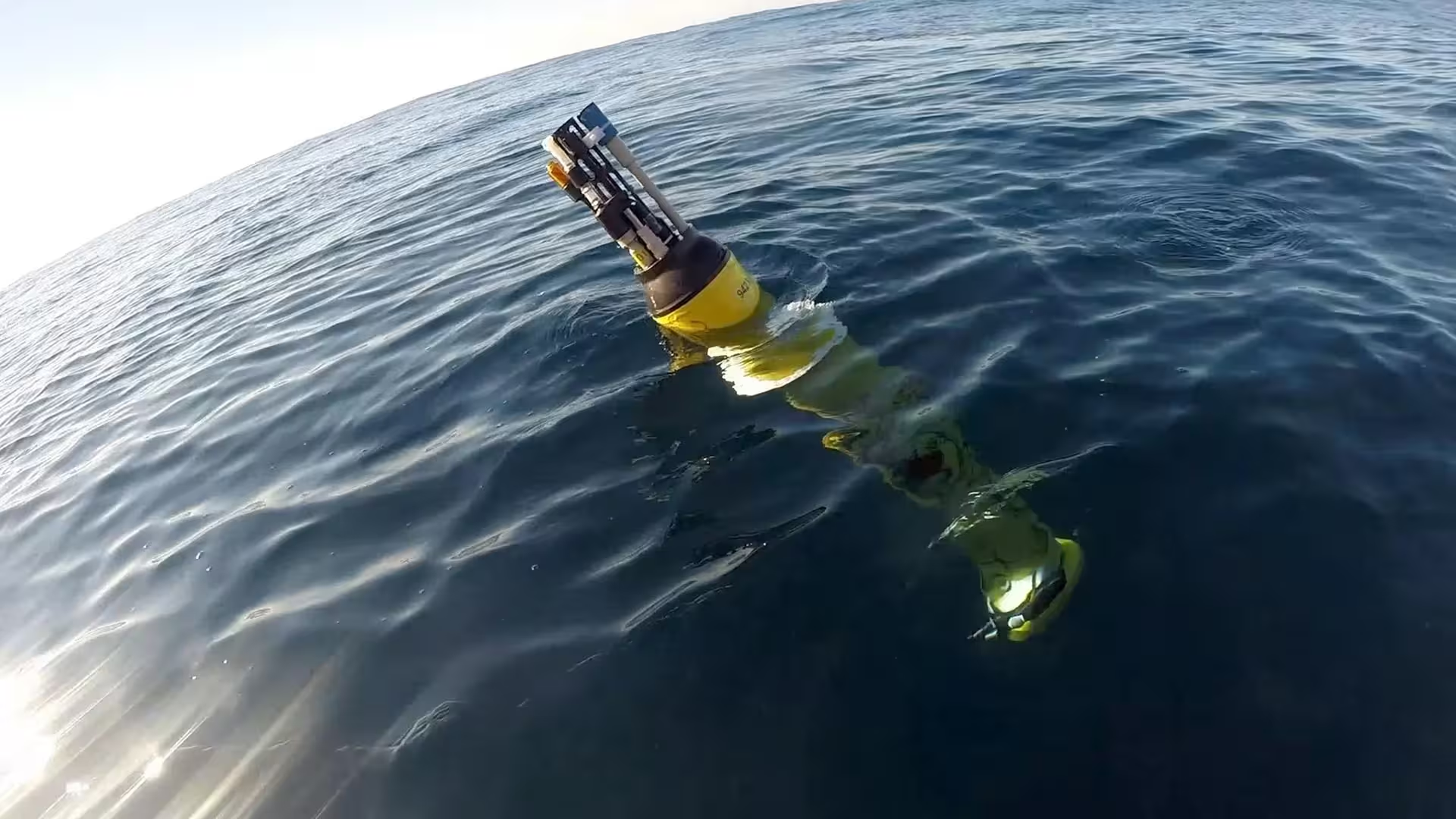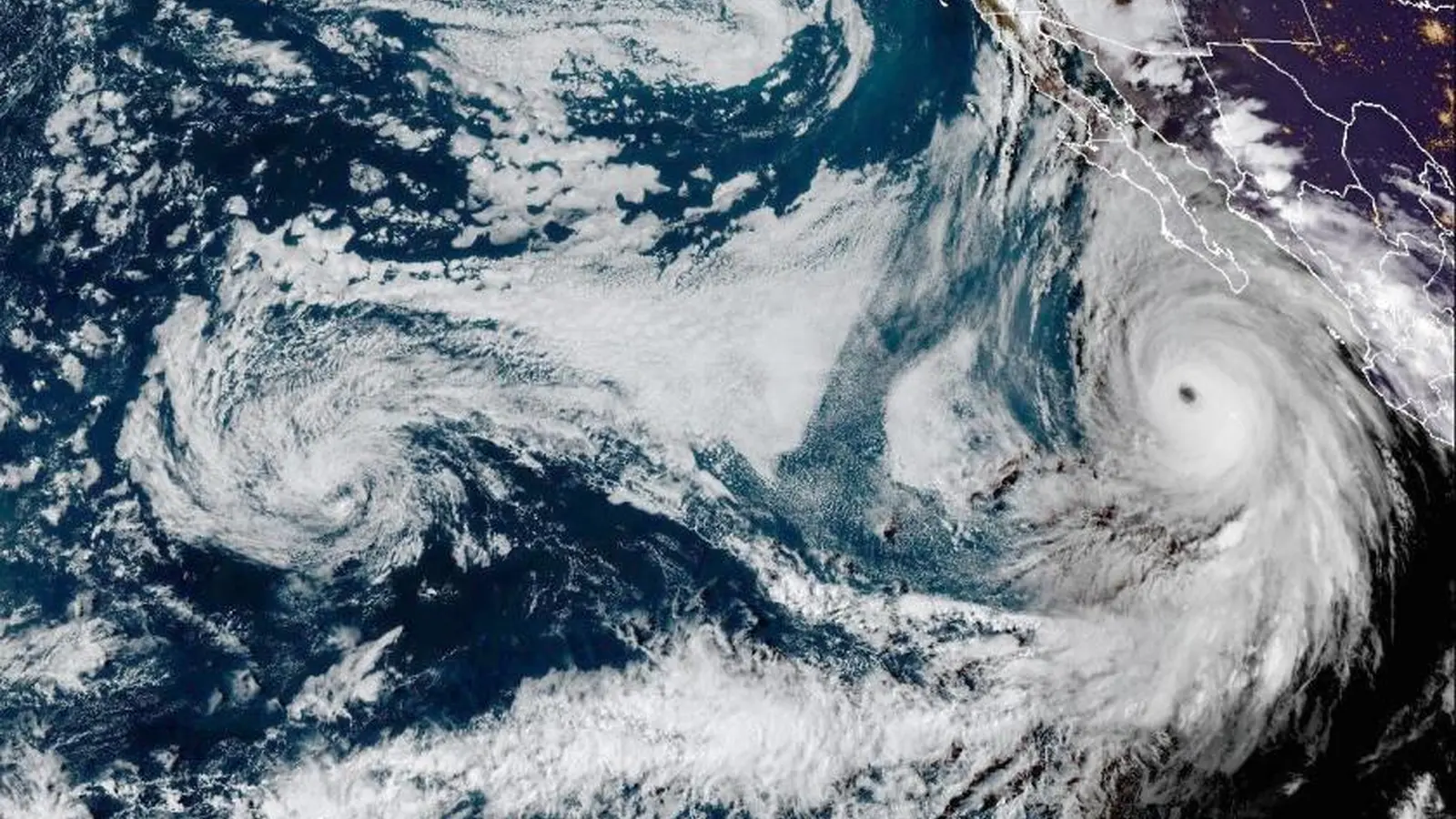8 Minutes
Robust new research shows marine heatwaves can obstruct the ocean's biological carbon pump—the system that transports carbon from the surface to the deep sea—reducing the ocean's capacity to sequester atmospheric CO2. An interdisciplinary team led by the Monterey Bay Aquarium Research Institute (MBARI) combined data from autonomous floats and long-running ship surveys in the Gulf of Alaska to examine how two major marine heatwaves altered plankton communities and changed where carbon particles end up in the water column.

Robotic floats can continuously collect detailed data about ocean conditions. A new study led by MBARI researchers from the Global Ocean Biogeochemistry Array project—with an interdisciplinary team of collaborators—has analyzed data from floats deployed in the Gulf of Alaska and records from ship-based plankton surveys and revealed that marine heatwaves reshape ocean food webs and affect the ocean’s ability to store carbon.
This article synthesizes the study's methods, key findings, and implications for climate buffering, marine ecosystems, and the future of ocean observation. It highlights why sustained, coordinated monitoring is essential as climate change increases the frequency and intensity of marine heatwaves.
Scientific background: the biological carbon pump and why it matters
The ocean is a major global carbon sink; roughly a quarter of anthropogenic CO2 emissions are absorbed by seawater. A central mechanism for long-term storage is the biological carbon pump: microscopic photosynthetic organisms (phytoplankton) convert CO2 to organic matter that moves through the food web. When consumers produce fecal pellets, or when phytoplankton die and aggregate into particles, organic carbon sinks through the mesopelagic (200–1,000 m) into the deep ocean, where it can be stored for centuries to millennia.
Marine heatwaves—anomalously warm ocean conditions that persist for days to months—can alter plankton species composition, metabolic rates, and trophic interactions. These changes can shift the size and density of particles that sink, or increase recycling of organic carbon in surface waters, limiting export to depth. Understanding these processes requires repeated, high-resolution biological and chemical observations from surface to depth, before, during, and after heatwaves.
Study design and observational tools
The research integrated multiple, independent datasets spanning more than a decade in the Gulf of Alaska, a region that experienced two major marine heatwaves: the 2013–2015 event widely known as "The Blob," and a second, strong event during 2019–2020. Key observational elements included:
- GO-BGC BGC-Argo floats: part of the Global Ocean Biogeochemistry (GO-BGC) Array led by MBARI, these autonomous floats profiled temperature, salinity, oxygen, nitrate, chlorophyll fluorescence, and particulate organic carbon (POC) every 5–10 days through the upper water column. Their continuous sampling provides repeated, high-frequency profiles of biological and chemical conditions across seasons and perturbations.
- Line P ship-based surveys: Fisheries and Oceans Canada’s long-standing Line P program supplied seasonal plankton community composition through pigment chemistry and environmental DNA (eDNA) sequencing. These ship-based snapshots offer taxonomic resolution and validate float-derived signals.
- Cross-disciplinary synthesis: The team included researchers from MBARI, the University of Miami Rosenstiel School, the Hakai Institute, Xiamen University, the University of British Columbia, the University of Southern Denmark, and Fisheries and Oceans Canada, combining oceanography, molecular biology, biogeochemistry, and ecosystem science.
Key discoveries: how heatwaves jam the conveyor belt
The study identified consistent evidence that marine heatwaves altered plankton communities and disrupted carbon export, but importantly the two heatwaves had different mechanistic outcomes:
- 2013–2015 event (The Blob): Surface productivity by photosynthetic plankton increased in the second year, but particulate organic carbon accumulated around ~200 meters rather than rapidly sinking to abyssal depths. This suggested a bottleneck in the mesopelagic where small particles and recycled carbon were retained instead of progressing to long-term sequestration.
- 2019–2020 event: The first year showed record-high accumulation of surface carbon particles that could not be fully explained by phytoplankton production. Instead, this pulse appeared driven by increased recycling through the food web and detrital buildup. The material began sinking but stalled in the 200–400 m range and did not reach deep-sea storage efficiently.
Across both events the common pattern was increased retention and recycling of organic carbon in the surface and twilight zones, driven by shifts toward smaller phytoplankton and higher abundances of small grazers. Smaller grazers produce slower-sinking fecal pellets and promote microbial degradation, which keeps carbon near the surface and increases the likelihood of it returning to the atmosphere.
"Our research found that these two major marine heatwaves altered plankton communities and disrupted the ocean's biological carbon pump. The conveyor belt carrying carbon from the surface to the deep sea jammed," said lead author Mariana Bif, formerly at MBARI and now an assistant professor at the University of Miami Rosenstiel School. "That raises the risk carbon will return to the atmosphere instead of being locked away in the deep ocean."
Mechanisms: plankton shifts, particle size, and mesopelagic retention
Biological mechanisms linking heat to carbon retention include:
- Species turnover: Heat favors smaller, warm-water phytoplankton lineages that generate fine, slow-sinking particles rather than large aggregates.
- Food-web rewiring: Increased abundance of small grazers enhances recycling; microbes respire organic carbon back to CO2 before it sinks.
- Mesopelagic processing: The twilight zone is rich in organisms that consume sinking particles; a slower sinking rate increases exposure time, allowing more carbon to be remineralized and returned to dissolved inorganic form.
These combined processes reduce the fraction of surface-produced organic carbon that reaches the deep ocean, weakening the long-term carbon sink.
Implications for climate, ecosystems, and fisheries
If marine heatwaves become more frequent and extensive—as ocean observations and climate models project—the effectiveness of the ocean as a carbon sink could decline. Less efficient carbon sequestration would create a positive climate feedback: more CO2 remaining in the atmosphere accelerates warming, in turn increasing the likelihood of more heatwaves.
Beyond climate, changes at the plankton base cascade through food webs, with potential consequences for fish recruitment, marine mammal foraging, and fisheries productivity. Regional economies that depend on stable fisheries may face increased variability if the base of the food chain shifts toward smaller, less nutritious prey.
Technology, monitoring, and future research directions
This study demonstrates the value of combining autonomous BGC-Argo floats with ship-based biological surveys and molecular tools (eDNA, pigment chemistry). Key priorities going forward include:
- Expanded coverage of BGC-Argo floats to capture diverse ocean regimes and heatwave events.
- Integrated, cross-institutional observation networks that provide before-during-after baselines for extreme events.
- Improved biogeochemical and ecosystem models that represent plankton community shifts, particle formation, and mesopelagic processing to predict carbon export under future warming scenarios.
Ken Johnson, MBARI Senior Scientist and lead principal investigator for the GO-BGC project, emphasized the collaborative approach: "To really understand how a heatwave impacts marine ecosystems and ocean processes, we need observation data from before, during, and after the event. It's a great example of how collaboration can help us answer key questions about the health of the ocean."
Expert Insight
Dr. Lena Morita, an ocean biogeochemist (fictional), commented: "This study is a clear signal that biological responses to warming can change the fate of carbon on decadal timescales. Autonomous floats give us the temporal resolution needed to observe these responses in real time. For modelers, incorporating variable particle-size dynamics and grazing pathways is essential to reduce uncertainty in climate forecasts."
Funding and collaboration
The research was supported primarily by the U.S. National Science Foundation's GO-BGC project (NSF Award 1946578 with operational support from NSF Award 2110258), with additional contributions from the David and Lucile Packard Foundation, China National Science Foundation (grant 42406099), Fundamental Research Funds for the Central Universities (grant 20720240105), the Danish Center for Hadal Research (DNRF145), and Fisheries and Oceans Canada’s Line P program. The study’s interdisciplinary authorship illustrates how coordinated international investment in sustained ocean observing delivers high-value scientific insights.
Conclusion
Marine heatwaves can rewire plankton communities and reduce the efficiency of the ocean's biological carbon pump by promoting retention and recycling of organic carbon in surface and twilight layers. These changes threaten the ocean's role as a long-term carbon sink and carry broad ecological and socioeconomic consequences. The findings underscore the urgency of expanding sustained, coordinated ocean observation—autonomous floats, ship surveys, and molecular tools—to detect, understand, and anticipate the cascading effects of a warming ocean.
Source: sciencedaily


Leave a Comment